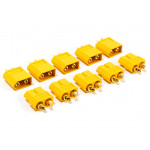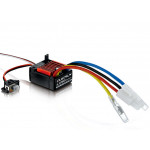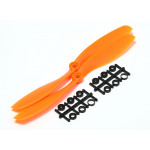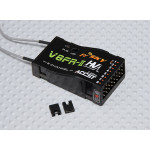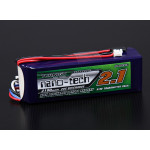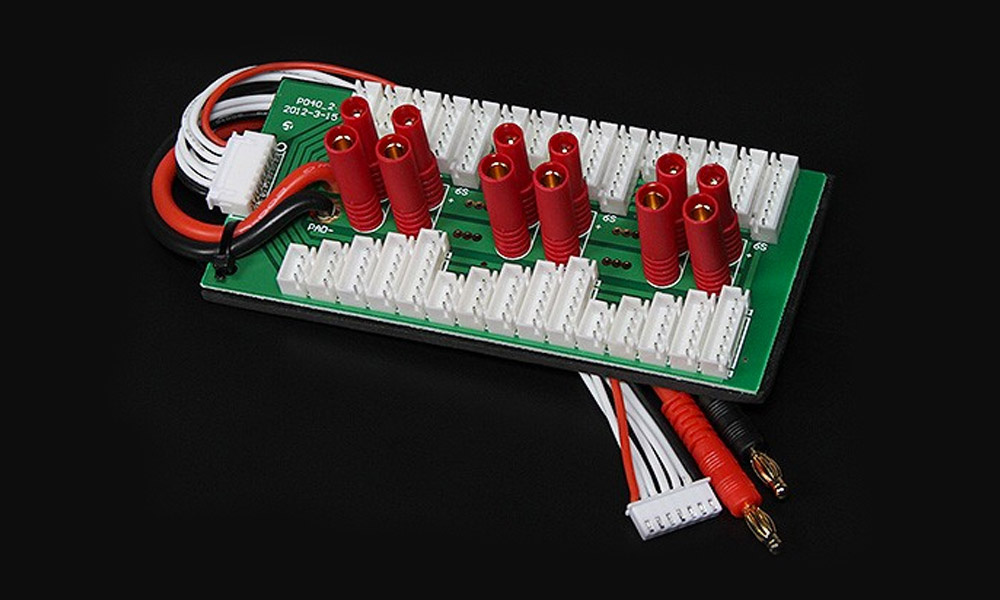
Parallel charging is a safe way to charge more than one battery of the same cell count at the same time.
It is not a difficult concept and definitely something that almost anyone could comprehend. In this article, we dive right into parallel charging and cover the topic completely. Parallel charging is quite popular and yet the vast majority are not aware of what’s required or involved. I hope that this article will give you a thorough understanding of parallel charging and the reasons why it is continuing to rapidly gain popularity. Whilst parallel charging is not for everyone, you can determine if this is something you could benefit from. We all want to save time and money so this might just be the hack you’re looking for.
Historically the cost associated with high current power supplies and chargers put many off pursuing this method of charging. The good news is the price has continued to drop and quality has risen. This means those items are now accessed able to most of us. Whilst it is still a considerable financial investment, you’re buying top-end units. Even if you are only charging smaller packs, it is possible to charge them all at the same time, saving you a lot of time and effort. If you’re spending an hour on charging the day before you go flying, then this is for you.
Safety Matters
Before we get too into more depth on this topic, let’s get the safety aspects out of the way. Parallel LiPo charging is an advanced method of charging and requires a certain level of electrical understanding. If you are not comfortable with basic electronics or understand the basics of LIPO batteries then this is not for you. Charging LiPo batteries comes with inherent risks and parallel charging adds an additional level of risk that you must be aware of and mitigate. Take careful note of the battery warning label and the documentation that accompanies it. LiPo batteries are dangerous in the wrong hands. Never become complacent with LiPo batteries as it is a volatile mixture. If you choose to parallel charge you do so at your own risk. Never, ever leave a battery charger unattended. Never. 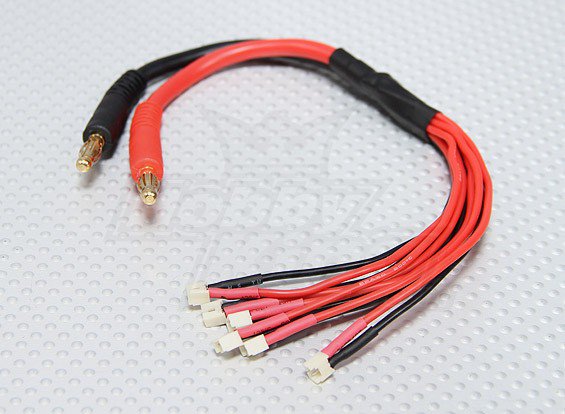 My introduction to parallel charging was using Micro JST Parallel Charge Lead in my micro planes. I was able to charge 6 batteries at the same time which saved me a stack of time and effort. The alternative was waiting for each battery to charge, which would have taken many more hours. These are very simple to use and require no additional parts. You simply remove the battery lead from your charger and replace it with the parallel charge lead and you’re done. The single-cell parallel charging is the most simple given you do not need to connect balance leads.
My introduction to parallel charging was using Micro JST Parallel Charge Lead in my micro planes. I was able to charge 6 batteries at the same time which saved me a stack of time and effort. The alternative was waiting for each battery to charge, which would have taken many more hours. These are very simple to use and require no additional parts. You simply remove the battery lead from your charger and replace it with the parallel charge lead and you’re done. The single-cell parallel charging is the most simple given you do not need to connect balance leads.
The whole benefit of Parallel LiPo charging is that you can charge more than one battery at the same time with a computerized LIPO battery charger. It’s the time and aggravation that you’re really saving. All your 3s batteries can be charged at the same time and once they’re charged you can connect all of your 6S batteries and charge those at the same time. Pack capacity is not important. So, 3s 1000mah and 3S 20000mah (yes that size exists) can all be charged at the same time however you cannot mix different cells counts. For example, you cannot charge 3s and 6s at the same time. Whilst capacity doesn’t matter the state of charge does. For example, don’t try and connect packs that are almost full of ones that are flat. You can think of electricity is a lot like water. Water wants will flow to the lowest point and so when you connect them the empty battery is a lot like a low spot. The current will try and flow into the discharged battery and it’s not good for either battery of the balance board. Worst case, the board, and battery are damaged. It’s going to be an expensive mistake.
The accepted norm is no more than a 0.15-volt maximum difference between cells of packs that you’re going to connect together. For example, I would happy connect packs with 3.75V + 3.80 + 3.90 and do so in that order. Remember that a pack resting at around 50% storage state (about 3.85V) will want to equalize the voltage if you connect a pack with 3.71v. The larger the voltage difference between packs paralleled together in parallel, the larger the amount of current that flows between packs as they all equalize. Once you master parallel charging and let’s face it, there isn’t that much to master, you’ll be done with charging one pack at a time. Those agonizing days will behind you and you can get onto doing something you actually want to do.
Key Takeaway
Your battery packs MUST be the same cell count and no more than a 0.15v cell variance. You can’t parallel charge a 6S pack with a 4S pack for example as all packs in the parallel charge circuit must be of the same cell count. There are hundreds of chargers on the market but how do we sort the wheat from the chaff? A charger might well be one of the most important Hobby appliances you’re going to purchase and it's likely to be with you for a long time. I still have both of my original chargers, 5 and 8 years respectively. I’m all for saving a buck where I can, however, a charger is no place to scrimp. Buy the best you can afford because even if you upgrade later and buy a higher current unit down the track you will still hang onto a lower current unit provided its good quality.
What to look for in a LIPO charger
When you first enter any hobby it can be daunting. The choices are endless with just as many opinions on offer. Every man and his dog are ready to offer you an expert opinion and usually, they are kind enough to offer you an affiliate link in which they are rewarded for getting you to purchase a product. Knowing what to buy and why is really important.
Is Parallel Charging LiPo Batteries Safe?
In short, Yes. LiPo Batteries, as with any type of rechargeable battery, come with risk. On the risk scale, LiPo Batteries are probably one of the most volatile. So with that in front of mind, it is up to you to mitigate risk whilst you’re parallel charging. This can be as safe or dangerous as you make it just like every other aspect of our hobby. Our hobby has its fair share of halfwits just like any hobby. The important thing is that you’re not one of them and that you don’t take advice from them. I have seen people on the interwebs come up with all sorts of reasons that parallel charging is dangerous as if it were some dangerous unknown alien technology, a bleeding-edge technology. That is simply false and wrong.
The fact is, we’ve been charging lipo batteries this way for a very long time. In the early days of LiPos, we had another 2 two digits when we described batteries. For example, a 3s 2200mah may have been displayed as 3s1p 2200mah or 3s2p 2200mah. The 2p stood for 2 cells in parallel, so yes it’s been around for a long time. Provided you have the accurate equipment, batteries in good health, and understand exactly what you are doing, you’ll have no issues. If you’re unsure about any aspect seek the opinions of people who actually parallel charge and who have been doing it for a long time.
Selecting a Good Parallel Board
 You will need a good quality board as you’re going to be pushing a very high current through the device. A good board will have decent gauge wire, these boards are usually not too expensive and Hobbyking has an exceptionally wide range of parallel charging boards. Some good options include:
You will need a good quality board as you’re going to be pushing a very high current through the device. A good board will have decent gauge wire, these boards are usually not too expensive and Hobbyking has an exceptionally wide range of parallel charging boards. Some good options include:
- HobbyKing Safe 40A Parallel Charge Board for 4 Packs 2~6S (XT60)
- Hobbyking Parallel charging Board for 6 packs 2~6S (HXT4mm)
- Hobbyking Parallel Charge Board For 6 Packs 2~6S (EC5)
Buying the Best LIPO Charger?
You’re not going to get very far in this hobby without a good LIPO charger but there are so many to choose from. So what do I need? There are hundreds of chargers on the market but how do we sort the wheat from the chaff? Chargers are chargers are chargers right? Wrong. Anything could be further from the truth. A charger might well be one of the most important Hobby appliances you could purchase. A poor quality charger is a risk to both persons and property. I’m all for saving a coin however a charger is no place to scrimp. Buy the best you can afford because even if you upgrade later and buy a higher capacity unit down the track you will still hang onto a lower capacity quality unit.
What to look for in a LIPO charger
The choices are endless with just as many opinions on offer, however, you essentially need 4 things.
- Accuracy
- Reliability
- Operability
- Affordable
What Must a LIPO Battery Charger do?
At the very least the appliance MUST Charge your LIPO batteries safely each and every time. It must be reliable and durable because it is unlikely to remain on your workbench. It will most likely be transported from your bench to the field and back again. It may be dropped, left in a hot car, left in the hot sun, sprinkled with rain and it must bounce back ready to take it again. It must be able to measure the individual cells of the battery and ensure that each cell is balanced accurately. It should be able to accept a wide variety of input voltages. Whilst 12v input is ok the appliance will need a dedicated 12v power supply and its use will be limited. For example, if you intend to connect the charger to a car battery with the engine running the voltage may reach 14.8v. Not only must you consider what you need for today but it may well be worth thinking ahead when you’re selecting a charger.
Researching beforehand and knowing what you need and what options are available is going to save you money and frustration in the long run. If you have spent any length of time around a flying field you would have no doubt seen some models that really interest you and have you all fired up to become competent enough to fly or build that particular model. This is where it might be a good idea to find out what components are inside the model. As we progress to larger and faster models the battery size tends to get larger in both cell count and capacity and in addition the way those batteries can be charged also changes. For example, the charging requirements of a 2s 1000mah are going to be very different to a 6S 6000mah, and using a small charger to charge a 6S 6000mah is going to take a very long time indeed. Imagine you have several large 6S packs that you need to charge before heading to the field, it will take you hours. Although it is possible, it's highly impractical because you’ll need to be close by during the charging cycle. If you want to get into mini quads, you’re probably looking at 1300mah 4s packs. No doubt you’ll want to fast charge those so you can spend as much time in the air as possible. Buying the right battery and the right charger will mean you could charge a battery almost as quickly as you fly them. Imagine charging those packs at 13amps! If you fly 90mm EDF jets you will likely use 5000mah 6s packs. No doubt you’ll want to fast charge those so you can spend as much time in the air as possible.
Again, buying the right battery and the right charger will mean you can charge a battery almost as quickly as you fly them. Imagine charging those packs at 50amps! I take a generator to the field and I’m able to fast charge a 6s 5000mah in under 8 minutes. Choosing the charger and the right battery might actually mean you spend less in the long run. I have fewer batteries in total preferring to fast charge the packs I do have. Not only am I thoroughly impressed with the performance of Turnigy Graphemes but also the fast charge capability. Some chargers need to be told what battery you have connected each and every time you use the charger. This means that it's possible you can make a mistake and overcharge the battery. My preference is for a smart charger that is able to determine what type of battery is connected. It would be the closest to plug and play charging at this time. The charger reads the balance port to determine the cell count. Although not essential I high recommend this function.
How Do You Connect Batteries to a Parallel Board?
- You MUST connect each battery back in parallel
- Each battery MUST be the same cell count
- Cell variance must not exceed .15v per cell.
- You must connect the main Discharge leads before the balance leads
- You MUST Connect each battery balance lead to the parallel board.
- You MUST understand battery safety guidelines
It is very important that you connect the main discharge leads first because if there is a variance in voltage the balance leads cannot handle high currents. They will heat up very quickly and burn out. This is because potentially large currents may flow between the packs as the voltages all equalize across the packs. when they are first connected all together flows through the heavy power wires and connectors without issue. A large number of the RC community charge batteries in this way. I have never had any issue with this technique but I understand what I’m doing completely. I suspect that I have charged batteries thousands of times this way and provided you are never complacent or decide not to follow the procedure you too will have great success.
How Does Parallel Charging Work?
 When your batteries are connected in parallel, all of the separate batteries effectively become one big battery with increased capacity. Imagine as we did earlier that the battery is a bucket that you’re going to fill with water. Plumbing the buckets together will increase the capacity and as you fill the bucket water flow will equalize the water content in each bucket. So by joining the batteries altogether in parallel, we can expect that as the batteries charge, all batteries will be charged at the same rate and complete at the same time as if it was a single LiPo battery.
When your batteries are connected in parallel, all of the separate batteries effectively become one big battery with increased capacity. Imagine as we did earlier that the battery is a bucket that you’re going to fill with water. Plumbing the buckets together will increase the capacity and as you fill the bucket water flow will equalize the water content in each bucket. So by joining the batteries altogether in parallel, we can expect that as the batteries charge, all batteries will be charged at the same rate and complete at the same time as if it was a single LiPo battery.
How To Determine LiPO Battery Charge Current
You may be familiar with how to charge your battery, however, a refresher is not going to hurt. Many are unfamiliar with how to safely determine the charge rate for a battery. All reputable battery manufacturers will provide you with the maximum charge rate of the battery is. This information may also be displayed as a C-rating. Although different than the discharge C-rating we can use the same math to determine the charge current. If you are unsure of your batteries' charge rate then it is safe to assume a 1C rate. To determine the amp charge rate we divide the pack capacity by 1000. Example 1: If your battery is a 2200mAh pack, your 1C charge rate is 2.2A. (2200 ÷ 1000 = 2.2) Example 2: If your battery is 1000mAh your 1C charge rate is 1.0A. (1000 ÷ 1000 = 1) If your batteries allow for a higher charge rate, for example, 5C, simply take the numbers you came to calculating your 1C rate and multiply it by that rate. Example 1: Our first example was a 2200mAh pack, which gave us a 2.2A charge rate at 1C. A 2C charge rate would be 4.4A, a 3C charge rate would be 6.6A and a 5C charge rate would be 11A. Example 1: 2200mAh 1C charge rate = 2.2A 2C charge rate = 4.4A 3C charge rate = 6.6A 5C charge rate = 11A Example 2: 1000Ah 1C charge rate = 1A 2C charge rate = 2A 3C charge rate = 3A 5C charge rate = 5A
What charge current do I use when parallel charging?
This is reasonably simple to determine. Once all your packs are connected they are essentially one large-capacity battery. Using the math above, we can expand upon this. If a 2200mah 5C pack can be charged at 11 amps then if we have 6 2200mah packs connected we could theoretically charge at 6 x 11amps. 66 amps. Now a 60amp charger used to be a crazy thought! Not so these days. It’s a regular occurrence for me to charge my 6s batteries at 30 amps. I can land and be back up for another sortie in less than 8 minutes. So back to charging, a 1C charge rate on a 5000mA (5 Amps). A 2C rate would be 10 Amps, and so forth. As we add batteries into the parallel we add these together 5000 + 2200 + 1000 + 5000 = 13200 or 13amps at 1c. If it was 5c then simply multiply by 5. I think you can now appreciate why high power chargers are required with this charging method. So let’s say we connect all of our batteries and the charger is capable of 30amp yet it turns out to be charging at 0.5C charge rate. This is perfect and will not harm your batteries. In fact, they may even appreciate be charged a little slower than normal. It is just going to take two hours to charge. So that’s parallel charging. Hopefully, you now have a solid understanding and you’ll be able to make use of this handy method of charging. Best of luck and happy landing. Written by Gozarian
Hear it First: Join our Mailing List
Sign up to receive new product updates, exclusive discounts, news, and more!

